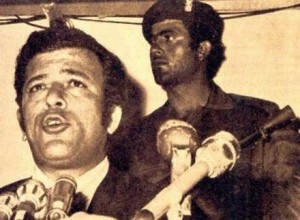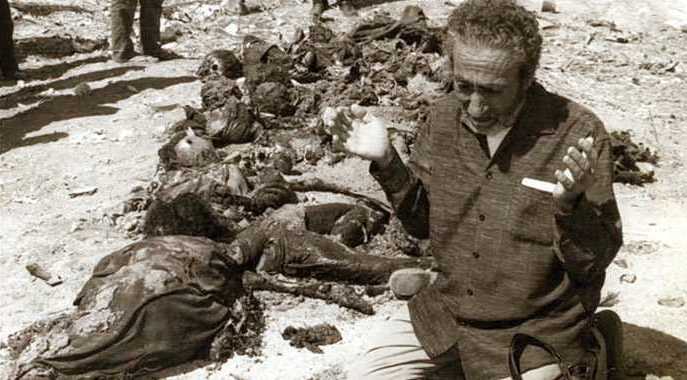Forty years ago today the war in Cyprus ended, but not before the gruesome discovery of a variety of mass graves containing the bodies of Turkish Cypriots. One of the worst was the Tochni Massacre: 85 inhabitants from Taşkent (also known as Tochni), a mainly Turkish village located in the Larnaca District of Cyprus, about halfway between Larnaca and Limassol, were killed by members of nationalist Greek Cypriot terror group EOKA-B.
During the War of 1974, the villagers of Taşkent had been persuaded to give up their arms and instead come under the protection of UN forces. On 14 August 1974, Greek Cypriots stormed the village and forcefully removed all the men. Men were also seized from nearby Mari and Terazi villages. They were loaded on to trucks and told they were being taken to a detention camp in Limassol. Instead they arrived at Palodia outside the city, where they were all lined up and shot, before bulldozers covered their bodies in a makeshift mass grave.
Although badly injured, Taşkent’s Suat Hussein Kafadar survived the atrocity and managed to get to nearby British base Akrotiri where he was able to give details of the events that took place, as well as identify some of the perpetrators including Andriko Melani. His eyewitness testimony was backed by Naciye Turgut, a female villager from Terazi, who said:
“Andriko Melani and Stasis Aradipyotis, both from Tochni, and Akis from Mari, along with soldiers from EOKA-B came to our home on 14 August and said they wanted to talk to my husband. They said they wanted to question my husband, and took him along with my 24-year-old twin brother Arif Hüseyin Ahmet and 13 other men. We never saw them again.”

On hearing that the Tochni Massacre had been uncovered, the perpetrators moved the bodies to another location. The remains were discovered some ten years ago and the UN continues to work to identify who they are. To date, the Greek Cypriot authorities have failed to bring any of the suspects to justice, even though a file with extensive details was handed to them in 2005 by the lawyer acting for the families of the Taşkent victims.
Greek Cypriots also committed similar atrocities in the northwest of the island. Turkish forces arrived too late to save the Turkish Cypriot inhabitants of Atlılar, Muratağa and Sandallar villages near Mağusa. The men of fighting age from these villages had gone to defend their local area, leaving the women, children and the elderly behind, who were brutally murdered by Greek Cypriot militia. Witnessed by international media at the end of August 1974, the UN forces dug up a total of 146 people that had been buried in two mass graves.
The 1974 War was the culmination of a bitter 11-year conflict that had engulfed Cyprus following its outbreak in December 1963 when Greek Cypriots brutally seized power and forced their former partners, the Turkish Cypriots, out of government in a period known as ‘Bloody Christmas’. In the ensuing years, fifty percent of Turkish Cypriots became refugees, some three times over. Many lived in enclaves or refugee camps enduring immense hardship and oppression.
Main photo: scene at a mass grave of Turkish Cypriots discovered in August 1974




